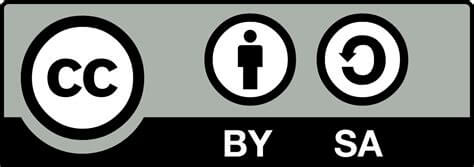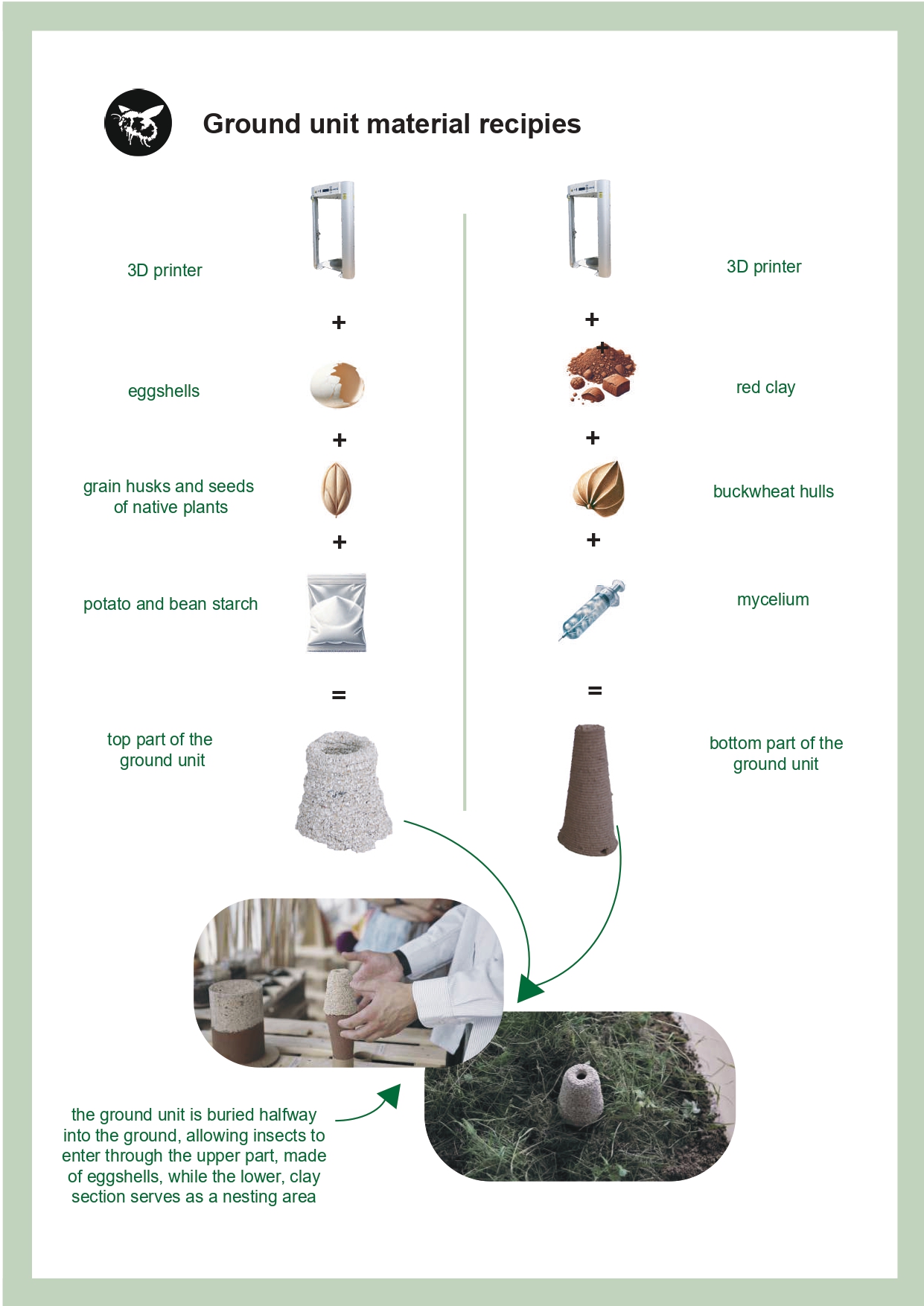
BiodiverCities
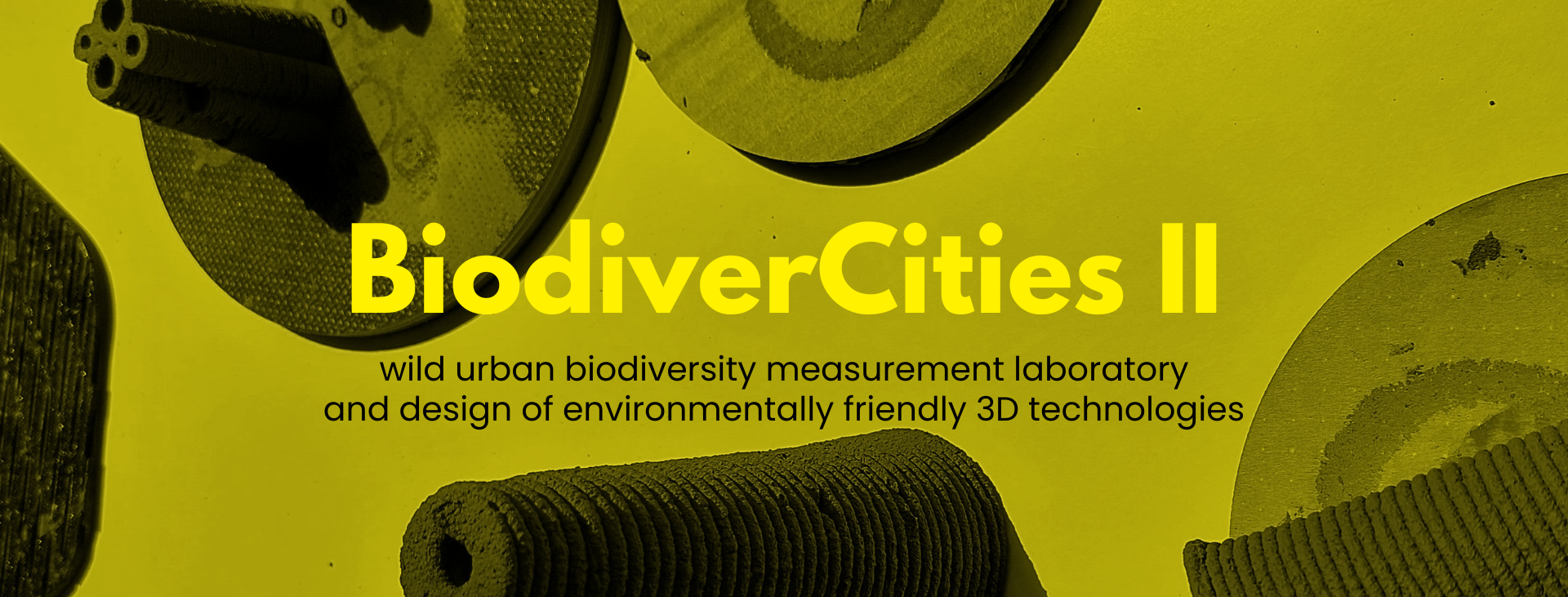
With biodiversity still being a pressing issue today, VšĮ ,,Dizaino draugai“ decided to continue the BiodiverCities project and, with the help of partners, carry out the second development phase. The second stage of the BiodiverCities project was financed by the Lithuanian Council for Culture, aiming to extend citizen involvement in biodiversity initiatives in Kaunas. The goal of the first phase of BiodiverCities was to create a bee "hotel" from laser-cut cardboard, coated with natural beeswax, and bamboo sticks. The following phase involved 3D printing the bee "hotel" using cold extrusion technology with sustainable and biodegradable materials. After several trials, the project team found the most suitable material and 3D printing technology for the production of the new bee "hotels“ and the exhibition was organized to educate the public on the topic of biodiversity conservation. The exhibition “Books, materials, designs, loops” took place at the KTU “M-Lab” prototyping laboratory center in June, where visitors could see and touch the new bee "hotels" and learn how to make them themselves with the right equipment. The event was held during the Lithuanian Design Week.
 Design week exhibiton opening. Photo Svetlana Batura
Design week exhibiton opening. Photo Svetlana Batura
Environmental ecosystem
Taking into account that the KTU prototyping center "M-Lab" was created with the goal of combining human well-being with sustainable technological innovations, this stage of the BiodiverCities project was chosen to be developed based on the ecosystem of the KTU student campus. In recent years, the reconstruction of Studentu Street set the theme for the project's further research direction: What impact does human and technical intervention during construction have on biodiversity? As the infrastructure of Studentu Street was improved, the ecosystem of this area was disrupted, leading to the assumption that "hotels" for wild insects could become an important tool for the conservation and restoration of biodiversity. Before integrating bee "hotels" into a specific area, it was necessary to assess the local flora, fauna, and meteorological characteristics. Team members studied Gričiupis Park, located behind the "M-Lab" building: at the bottom of a long-neglected (but since the summer of 2024 also being reconstructed) valley flows a stream, and old fruit trees grow on the slopes.
After collecting samples and conducting research at the KTU Santaka Valley, it was found that the following mushroom species are characteristic to this area: Pholiota Lucifera, Coprinus Comatus, Ganoderma Curtisii, and Cyclocybe Cylindracea. The study of mycelium helps determine the climate characteristics and the diversity of plants and animals found in that environment, as well as more accurately assess how this species network reacts to ongoing reconstruction, and how it would accommodate the integration of habitats for ground-nesting insects.
Mycelium research and innoculation experiments wew conducted in collaboration with Tomas Čelpanovas from MB Fungusas, and we thank him for his important insights!
 Upper part of the nest. Photo Svetlana Batura
Upper part of the nest. Photo Svetlana Batura
Toolkit improvement
The "DIY" kit for tree-nesting bees, created in 2022, was initially designed for simple, hands-on assembly. In this phase of the project, after the partners at KTU granted access to the circular experimental lab ,,Olabas“, digital manufacturing technologies were included. The bee nests were printed using a Delta Wasp 2040 3D printer, which operates on a cold extrusion principle, typically used for ceramics and alternative plant-based material mixtures. Sustainable and biodegradable materials were used for printing the insect habitats, consisting of a mixture of crushed eggshells and potato starch. The crushed eggshells provide the necessary mechanical properties for the product, while the starch acts as a binder. Additionally, this combination has a light color, which attracts pollinator insects. After several tests, a 9 mm nozzle was selected for use with the Delta Wasp 2040 3D printer. The structural module made from the eggshell material took 6 minutes to print, the clay-based bottom part (which is planted in the ground) took 4 minutes, the inner bottom part took 9 minutes, and the inner upper part of the module took 8 minutes to print.
 Fully assembled structure. Photo Svetlana Batura
Fully assembled structure. Photo Svetlana Batura
Improvement of the bee hotel
In improving the concept of the bee "hotel," it was important to find materials that are not only environmentally friendly but also meet the mechanical properties required for the product. The materials for the insect hotel have been chosen to decompose naturally within one season, thereby enriching the soil. The final structure consists of two conical parts: one that is closed to create the nest and one that is open to allow the insects to enter, when the object itself is buried in the ground halfway. The lower part, made of red clay, mycelium and buckwheat hulls, encourages the growth of the fungal network. The upper part is made of eggshells, starch and a mixture of seeds from wild flowers native to Lithuania. Taking into account the most common waste found in Lithuania and after several trials, the following material combinations are used for the new bee “hotels”:
- 100g water
- 100g eggshells
- 20g potato starch
- 10g bean starch
- 6g oat seed fibers
- 10g flower seeds (camelina, sunflower, flaxseeds, phacelia, buckwheat)
- 100g red clay
- 30g water
- 10g ground buckwheat seeds
- Mycelium
This modular design ensures the versatility of the structure: this wild insect habitat will not only provide shelter for pollinators, but will also contribute to the improvement of the ecosystem once its main function is complete. It is expected that these houses act as small biodiversity enhancers, transforming unused land into thriving habitats for insects, plants and fungi.
The return of nutrients to the soil is a key process in maintaining ecological balance, promoting healthy soil conditions, and helping sustain wild species populations. Eggshells are rich in calcium carbonate, which helps neutralize soil acidity and encourages the growth of stronger plant roots. Fermented grain residues supply the soil with organic matter and nutrients such as nitrogen, phosphorus, and potassium, which improve plant nutrition and accelerate the activity of soil microorganisms. Meanwhile, clay helps improve soil structure by retaining moisture and nutrients while helping wild plants and insects maintain a stable microclimate. Potato starch also enriches the soil with carbohydrates, which are important energy sources for microorganisms. The introduction of these materials into the soil not only improves its fertility but also creates more favorable conditions for wild plants and insects, such as pollinators, thus contributing to the preservation of biodiversity in urban areas.
 Prototyping trials. Photo KTU Design Centre
Prototyping trials. Photo KTU Design Centre
Workshop
The project activities were presented to the public at a workshop on the 29th of November. The urban biodiversity improvement workshop took place in the „Olabas“ laboratory at the KTU M-Lab interdisciplinary prototyping centre, curated by project partners KTU Design Centre. The laboratory was used for the production of the insect habitat, so it was decided to invite the workshop participants there. During the event, the participants were introduced to the project and the issues addressed; a 3D printing demonstration of the hotel was performed; and the laboratory researchers explained the process of bioceramics development.
Participants also got hands-on and personal with organic waste by mixing two types of organic materials used for the hotel structure and moulding them into a modular prototype - a mini biodiversity enhancement object to be planted in a chosen outdoor space.
In cooperation with the KTU Institute of Environmental Engineering and the KTU Faculty of Economics and Business, the BiodiverCities II workshop became part of the Youth For A Sustainable Future conference programme. The aim of the conference is to introduce the topic of sustainability to young people aged 18-30 through real-life examples and existing good practices. The theoretical presentations at the conference covered topics such as sustainable mobility, landscaping and environmental protection, and community participation. Alongside the BiodiverCities workshop, other practical sessions were held in parallel: workshops on design thinking, proactive participation in sustainability initiatives, etc. The collaboration with the conference organisers highlighted the issues addressed by the project - how to move environmental issues from theoretical knowledge (or concerns) to tangible activism in the chosen field of ecology?
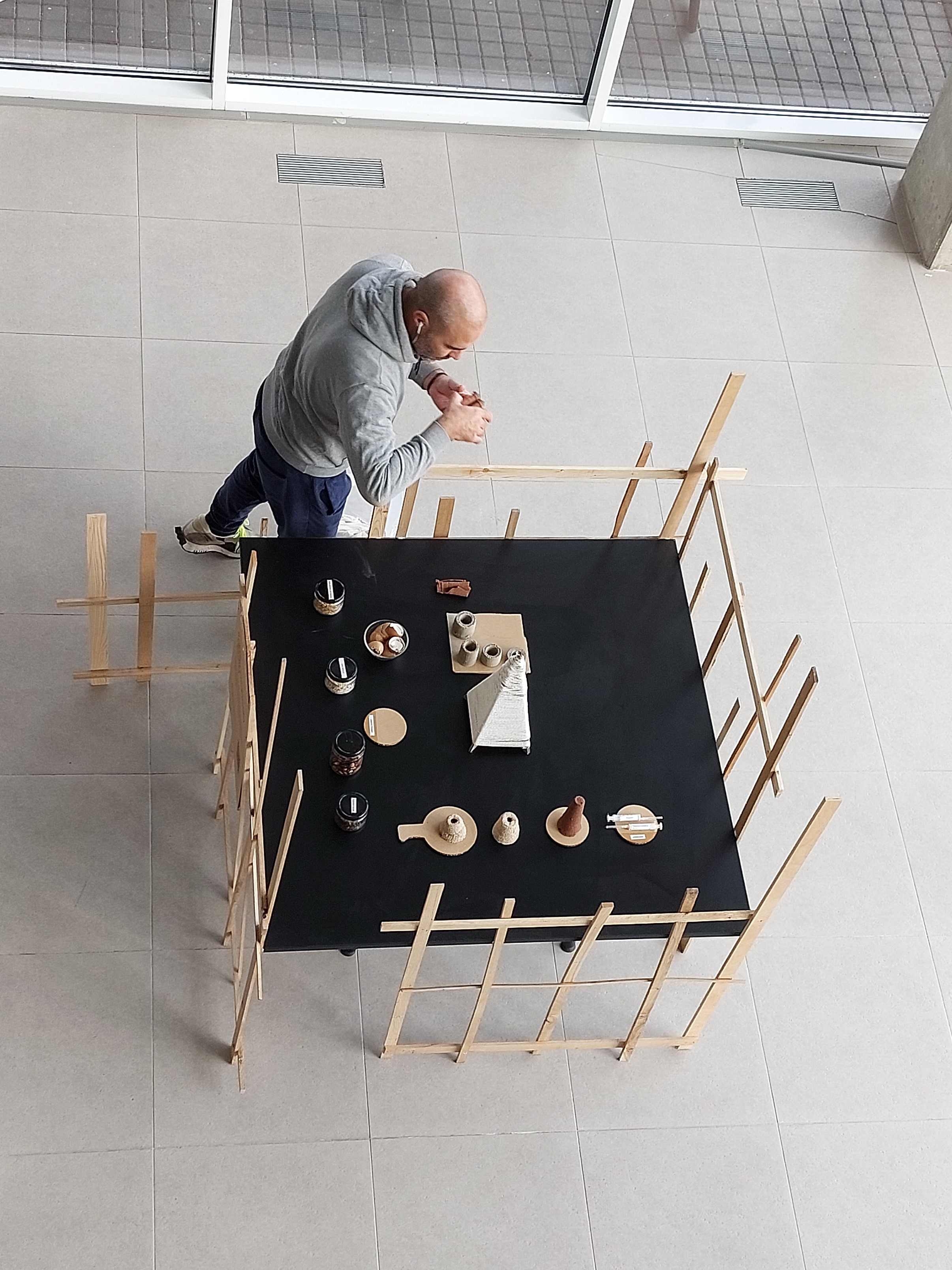
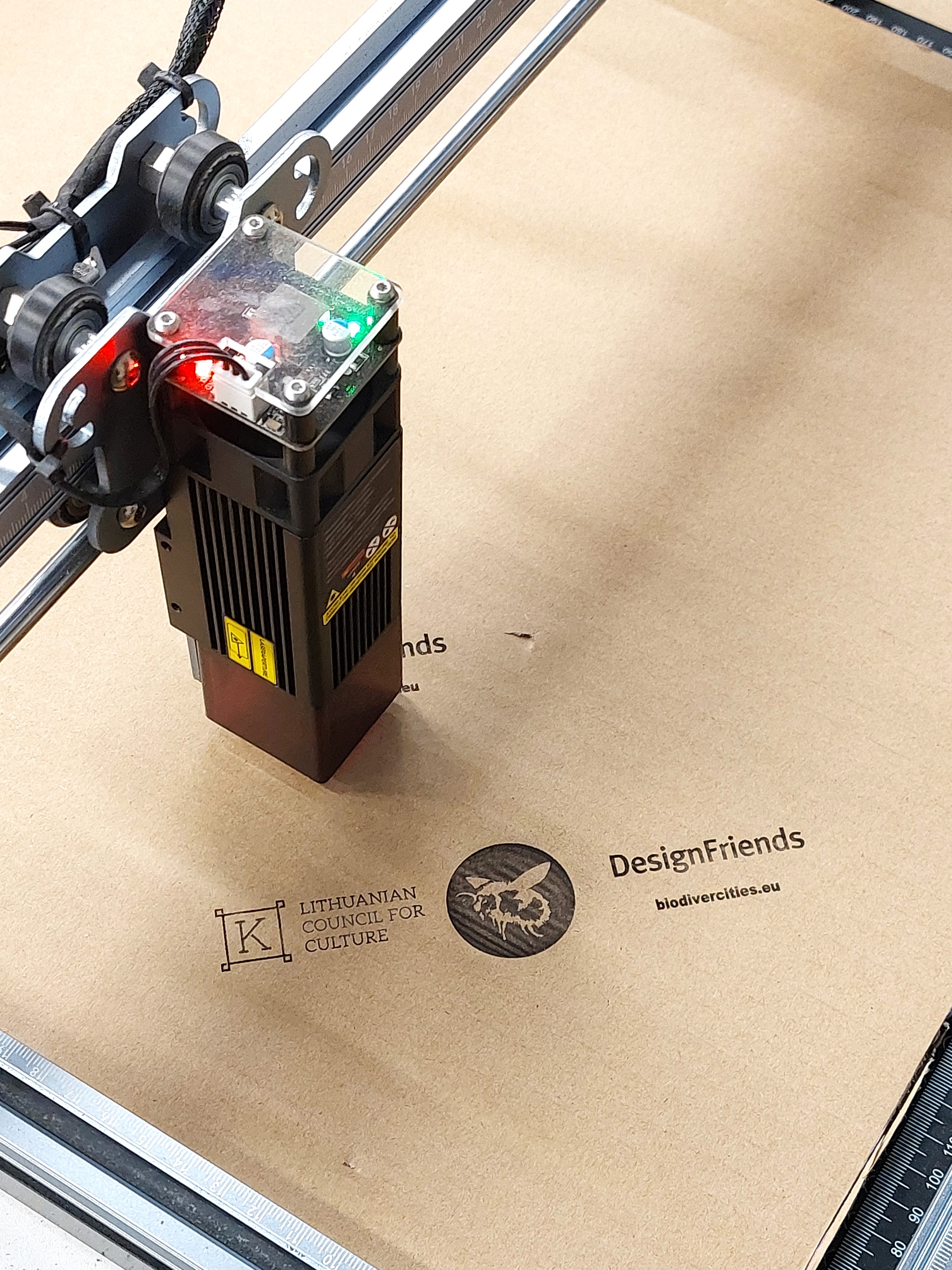
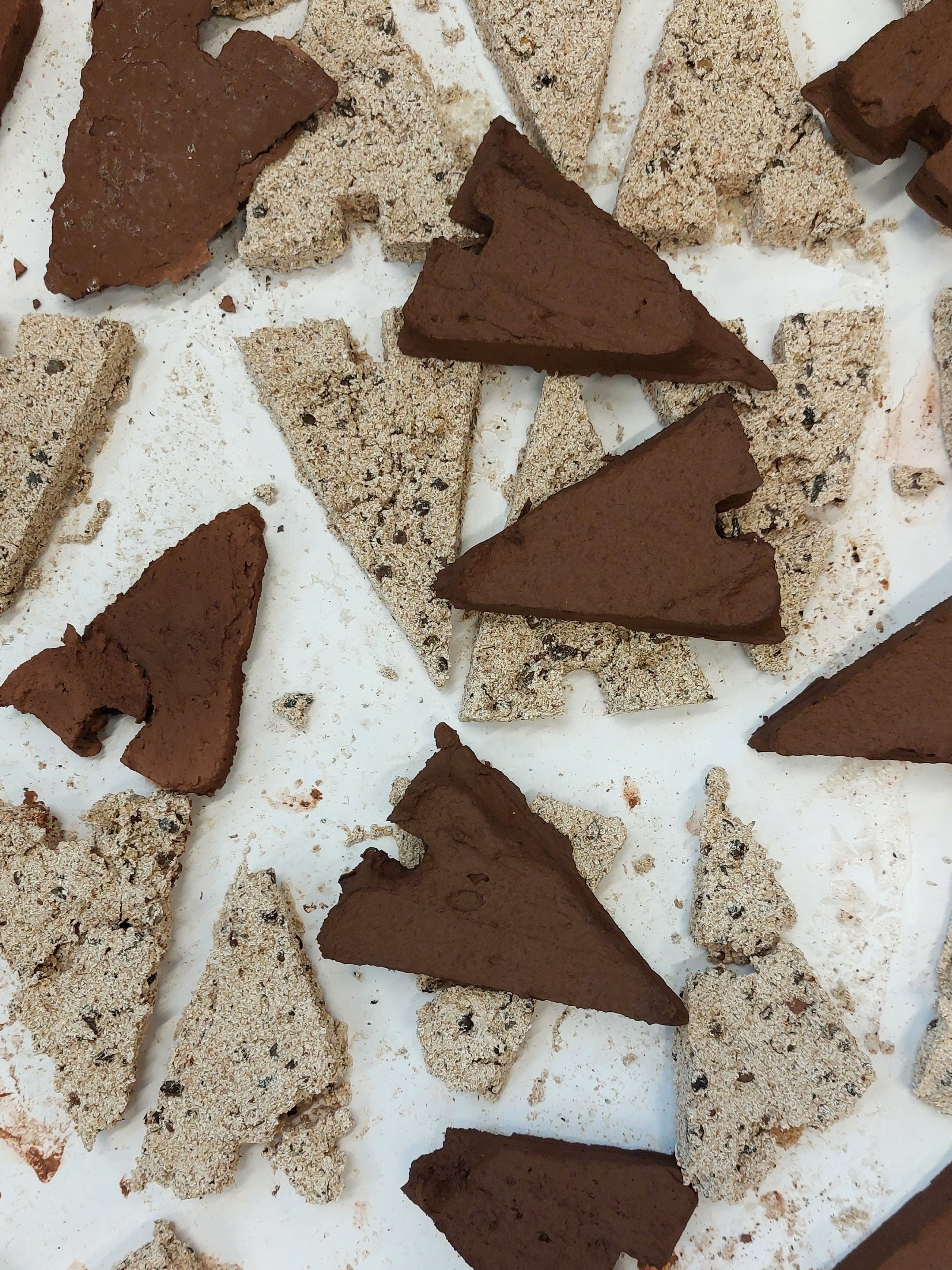
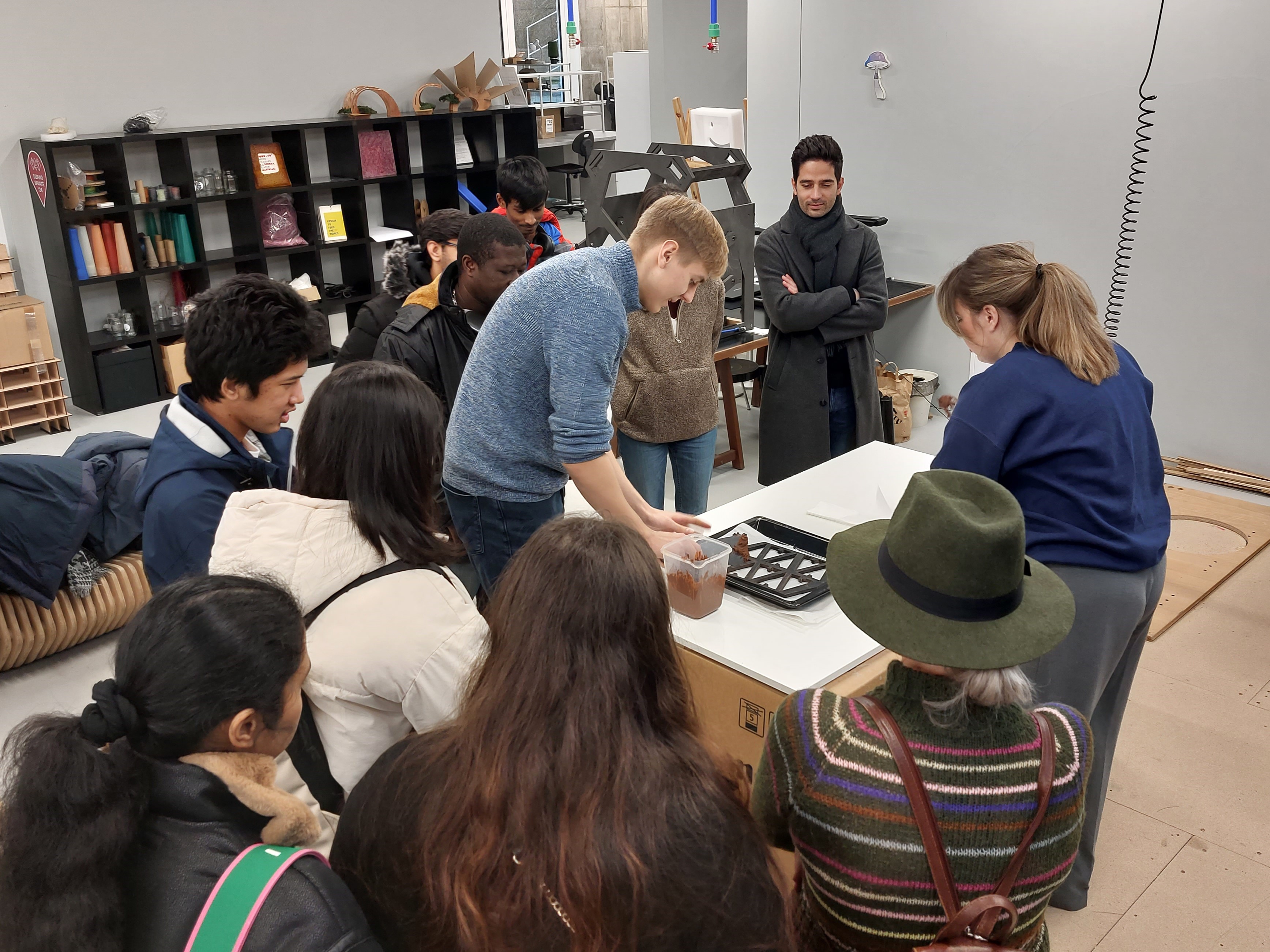
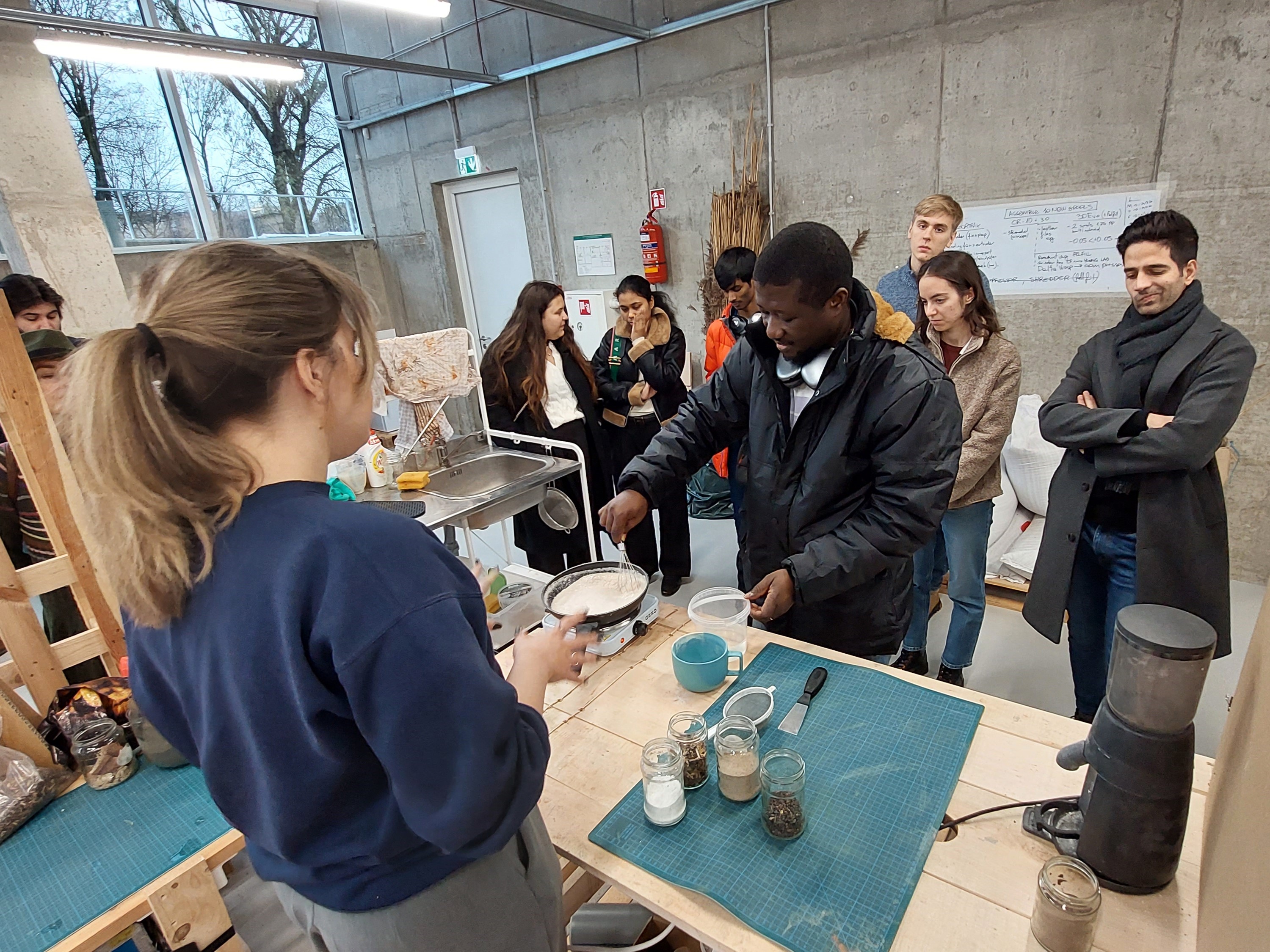
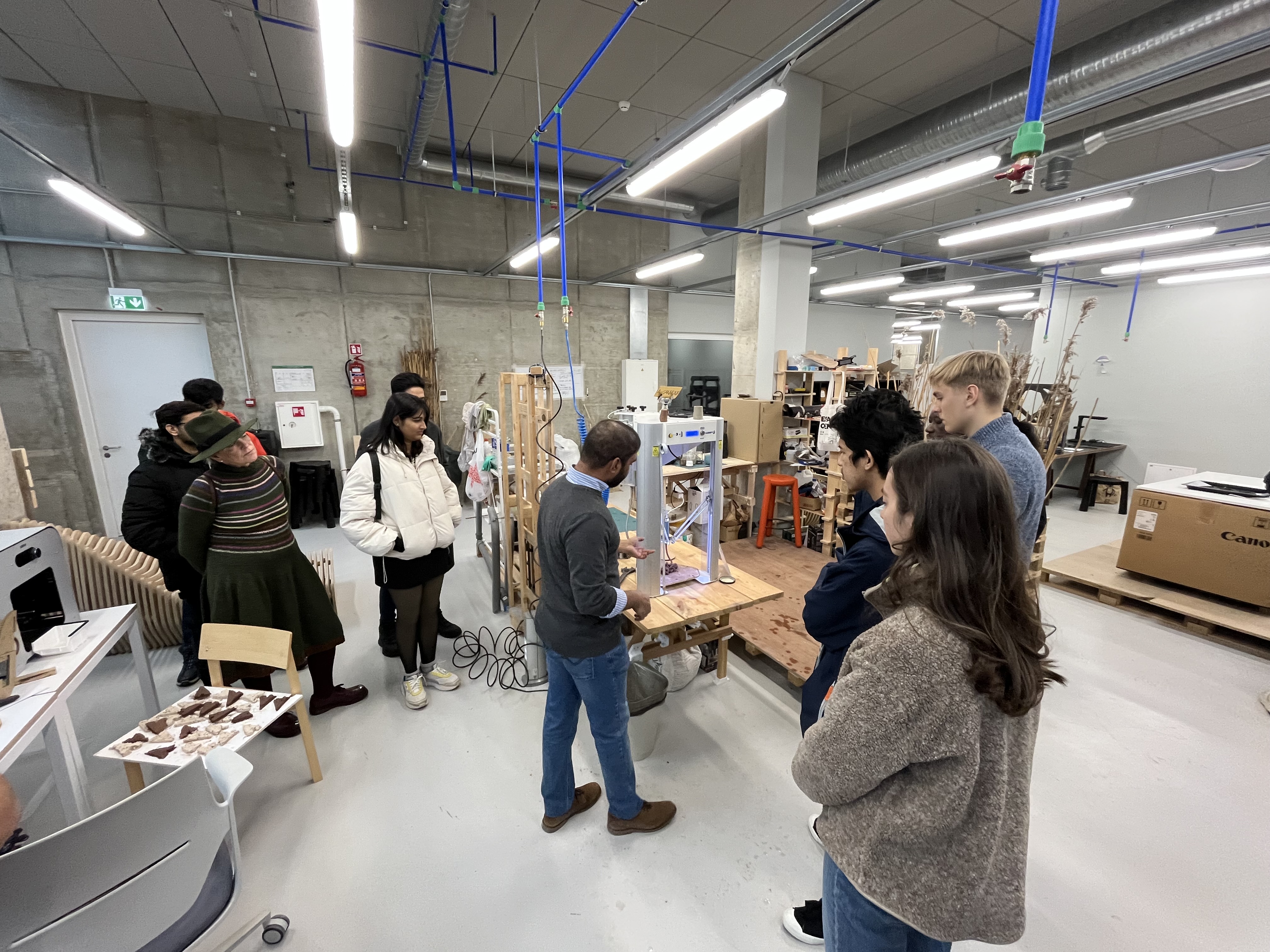
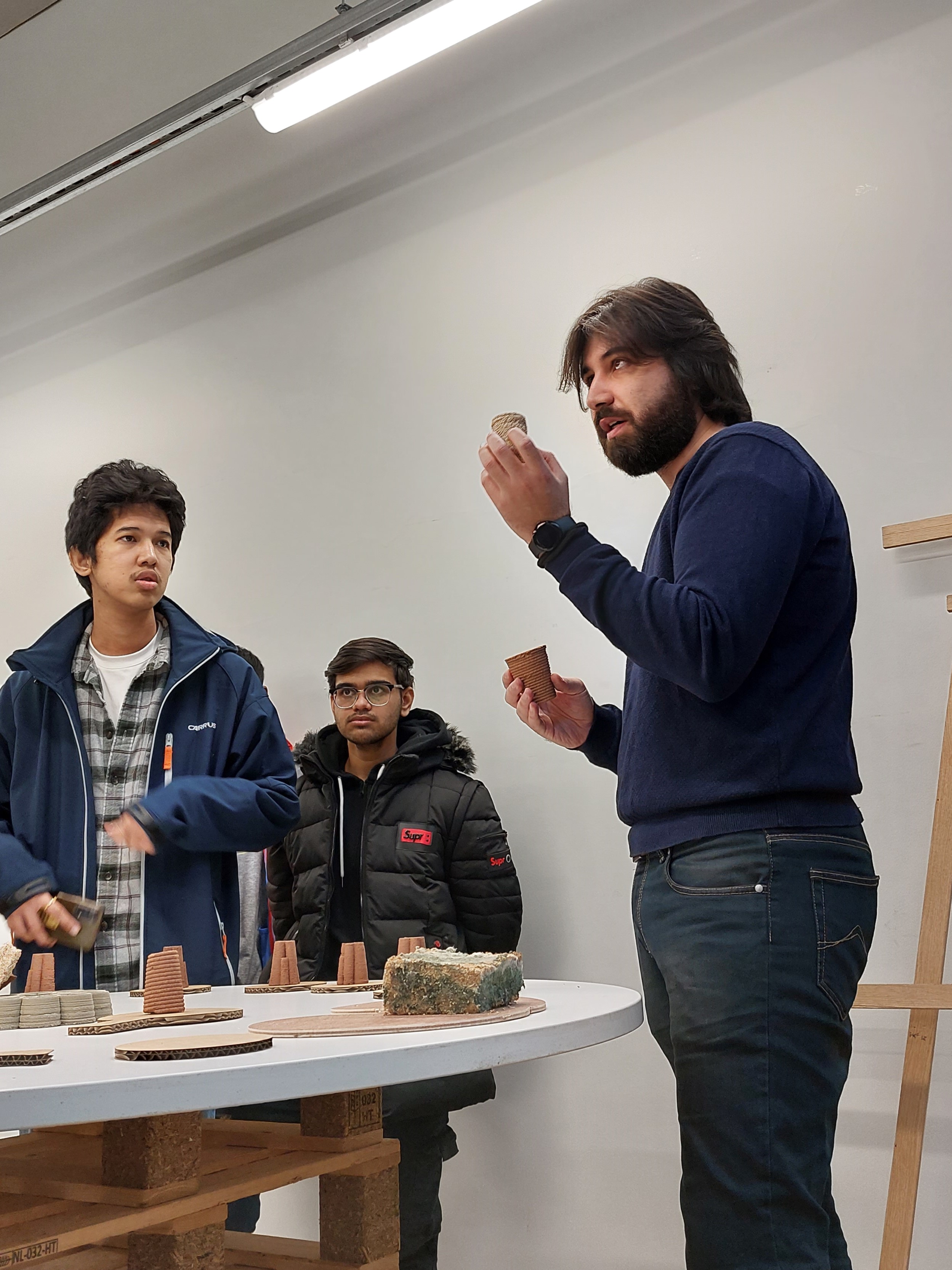
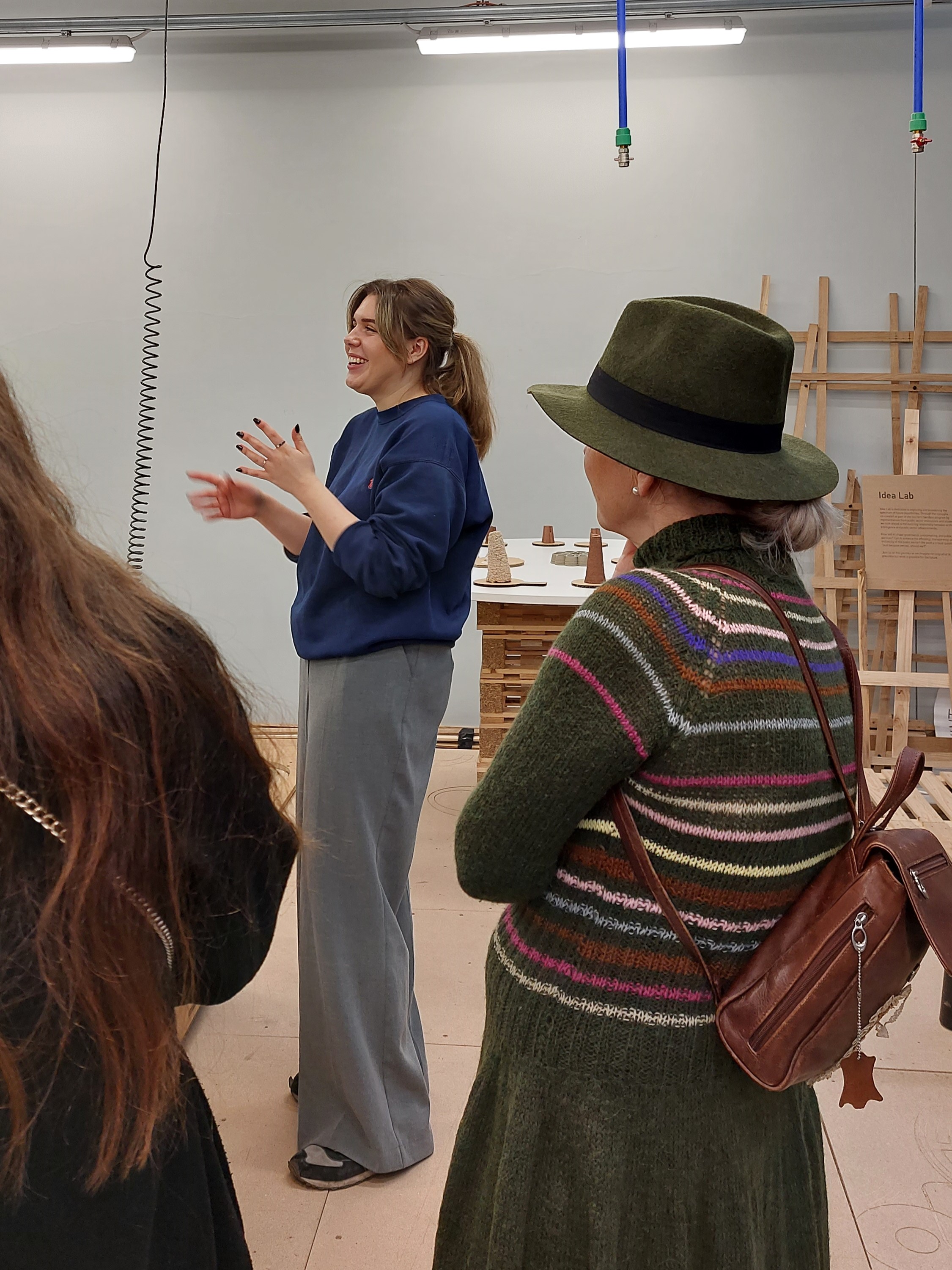
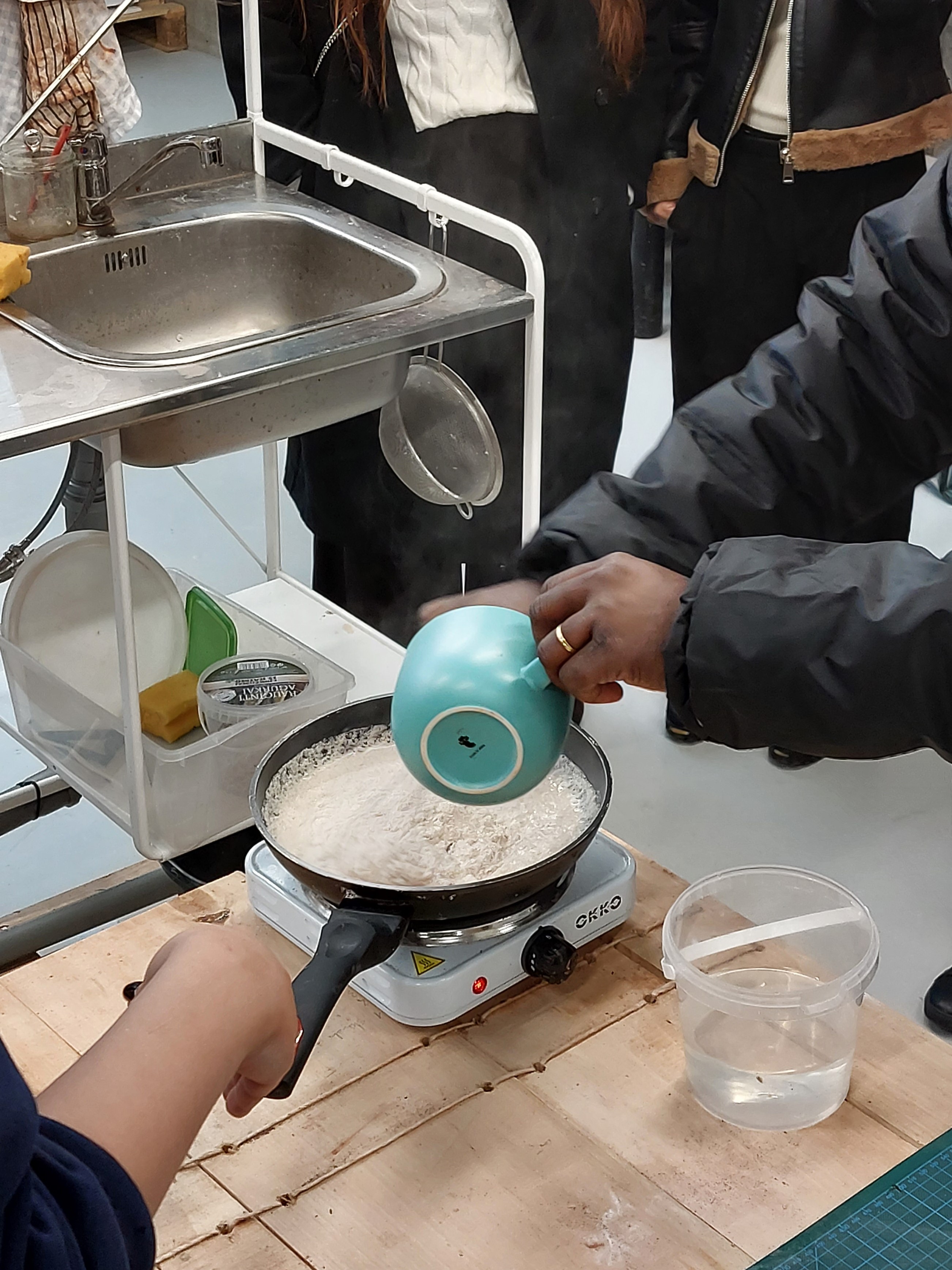
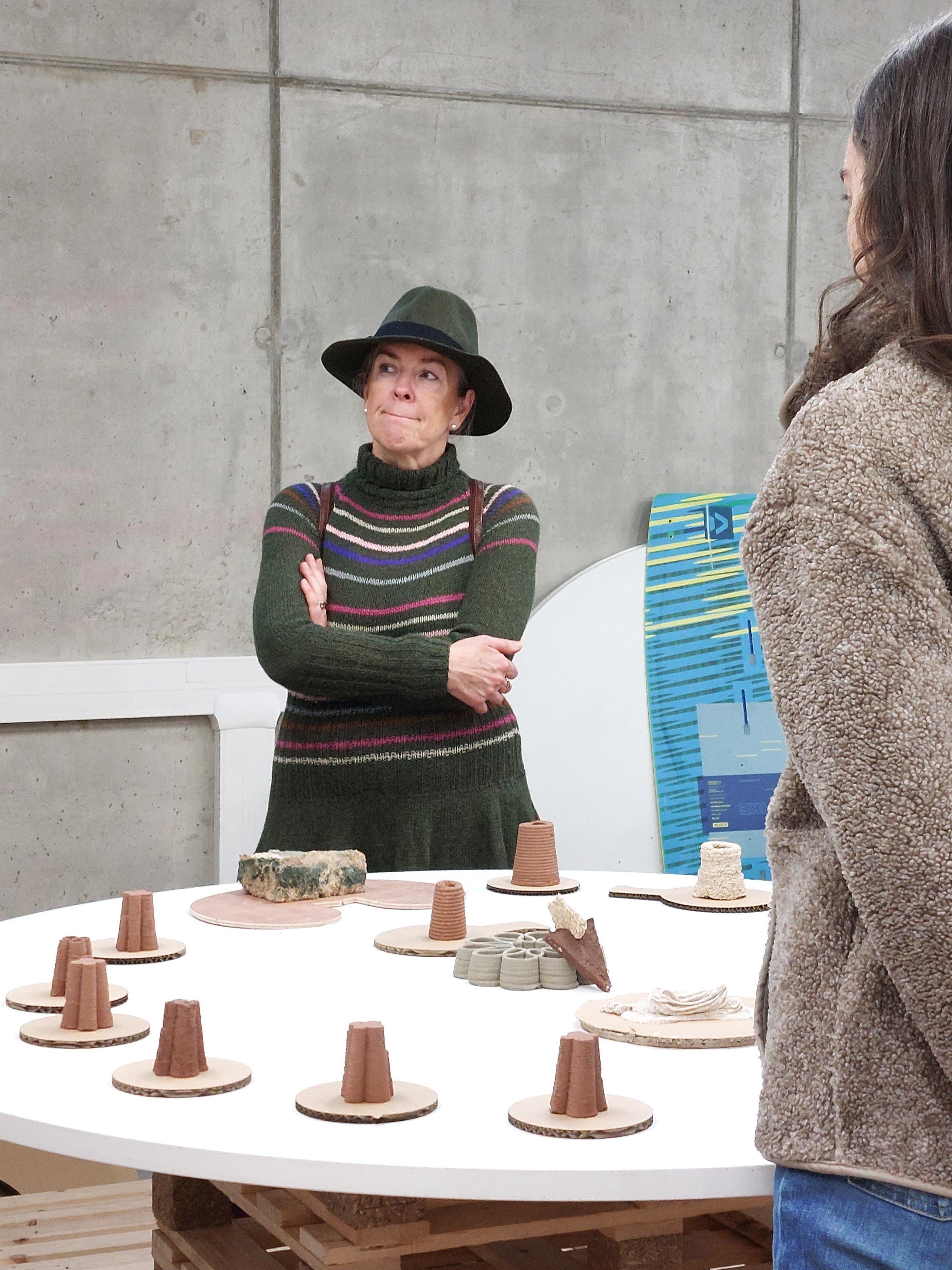
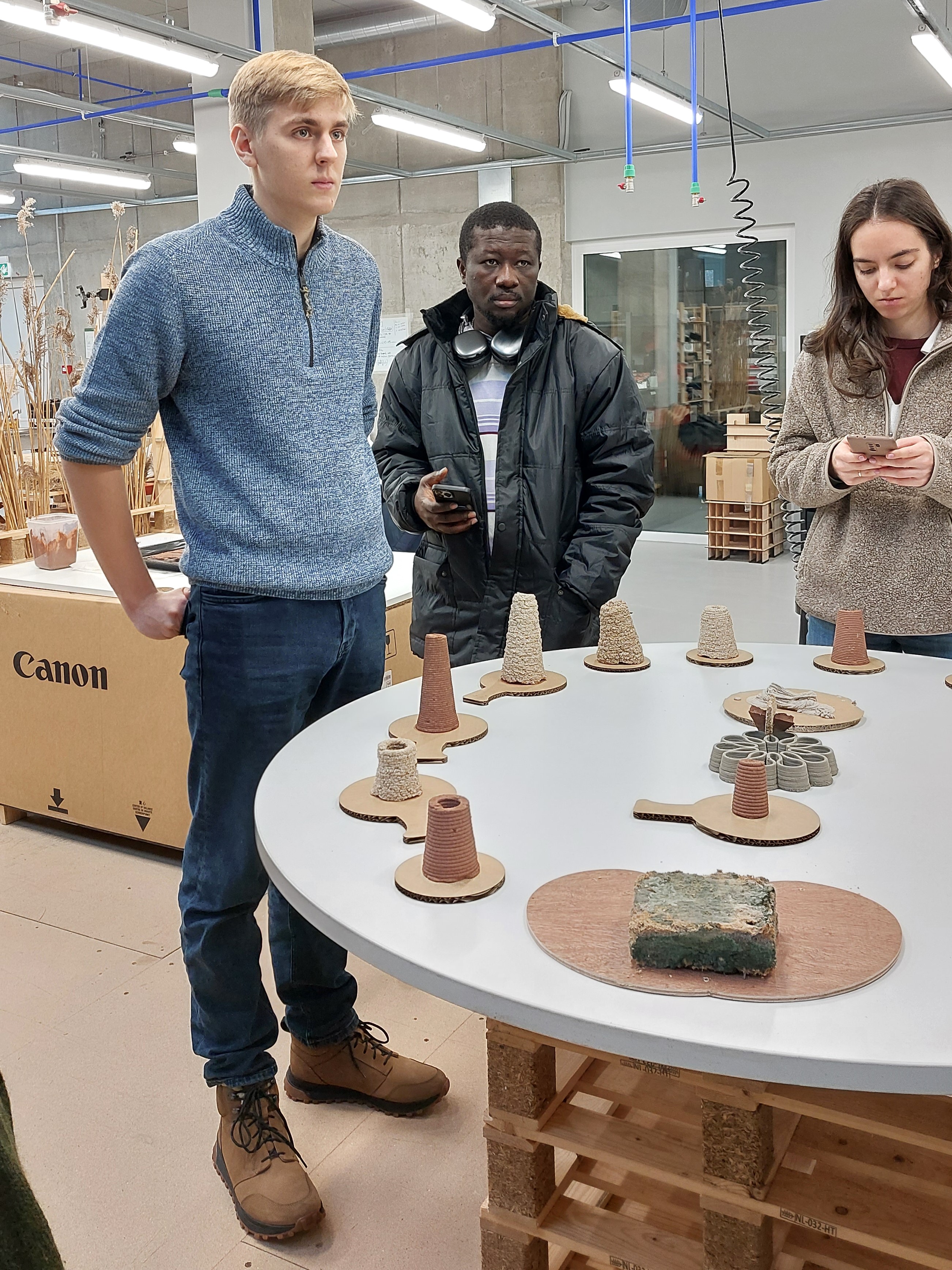
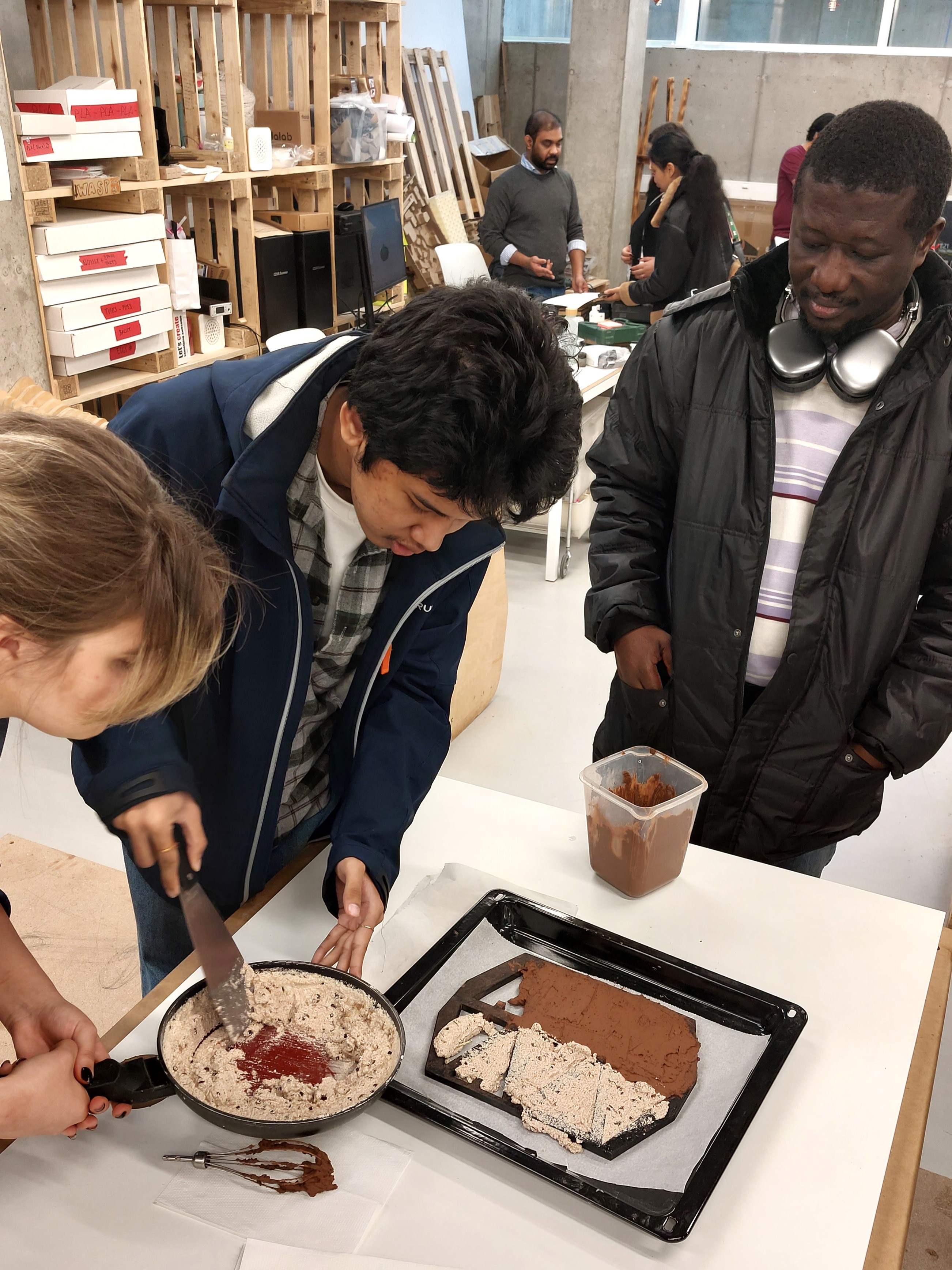
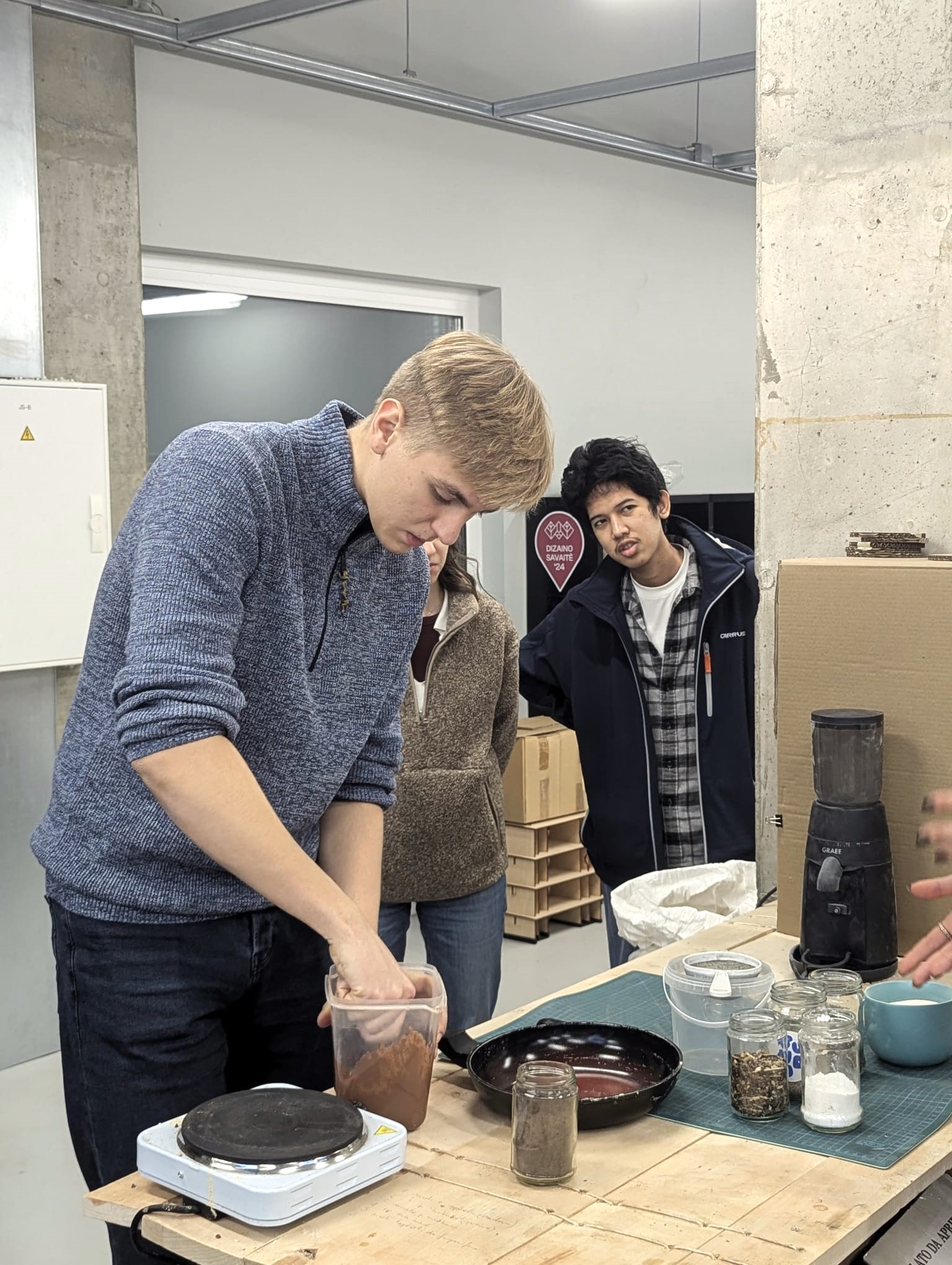
Conclusion
The project has demonstrated the importance of interdisciplinary cooperation when dealing with environmental issues. In the context of city ecology, urbanised areas are subject to a variety of natural, social and technological challenges, and it is important to look at solutions from more than just a design perspective. The work with bakeries in Kaunas on the provision of eggshells has highlighted the challenges of the legal regulation of organic waste management and sorting that businesses face. Contacts with the agricultural industry highlighted an underexploited opportunity: the reuse of plant-based waste in ecodesign. The study of mycelium in a renovated park and the experiments on the propagation and incorporation of discovered species into new materials have highlighted both an interesting area for future research and the concern that the importance of wild native species in the context of urban regeneration is still under-emphasised. All of these themes are not straightforward and require systemic change and cross-sectoral initiatives to address the topic of ecology comprehensively and to achieve sustainable change. Working collaboratively across disciplines allows for integrated and sustainable solutions that not only restore ecosystem health, but also strengthen the relationship between citizens and nature.
In the research on the development of underground nesting insect habitats, the technical/engineering aspects of design were complemented by a philosophical discussion: how not to get caught up in aesthetic pursuits and not to lose sight of the practical purpose of such an object? After interviews with designers, biologists and environmentally conscious citizens, it was agreed that the involvement of art and design professionals in environmental issues is important in such discourse, as their systematic thinking and creative approach allows them to address ecological problems in innovative and aesthetically pleasing ways. In order to sustain the long-term involvement of urban citizens in the creation of healthy urban environments, it is suggested that design communities, often equipped with digital fabrication laboratories these days, could become the producers of such habitats, and, therefore, promoters of the topics that anew generation of designers are dealing with. Such activities are expected to contribute to the promotion of design as a broadly encompassing, not only aesthetic field.
 Moments from design week exhibiton. Photo Svetlana Batura
Moments from design week exhibiton. Photo Svetlana Batura
Team:
- Justė Motuzaitė
- Kontryna Lenkauskaitė
- Lorenzo Piazzi
- Modestas Stankaitis
- Rūta Valušytė
- Niccolò Lelli
- Hari Prasanna Manimaran
- Giuseppe Donvito
- Justina Klėjūtė
Contacts: info@designfriends.org
Developed and distributed under CC BY-SA license
